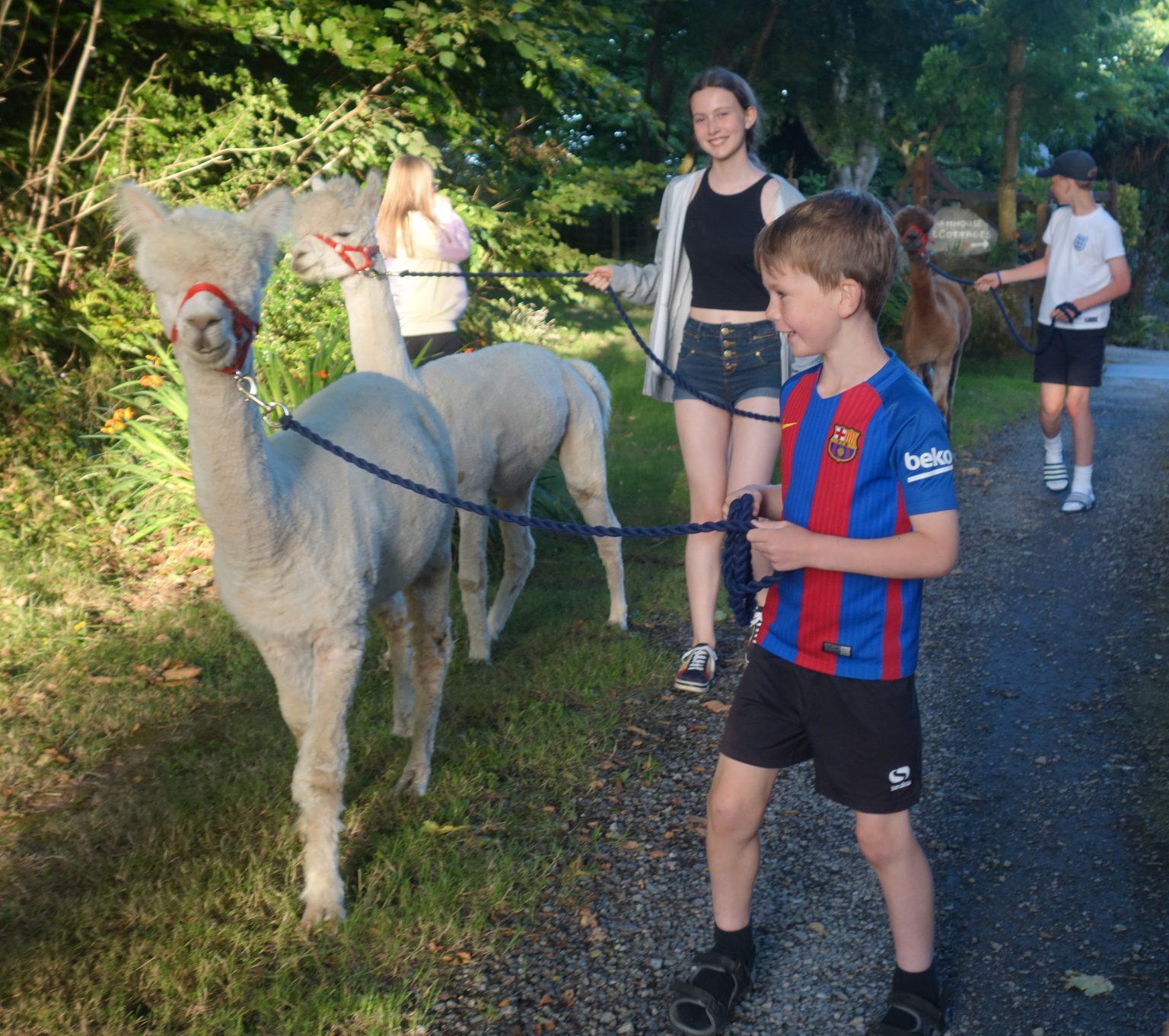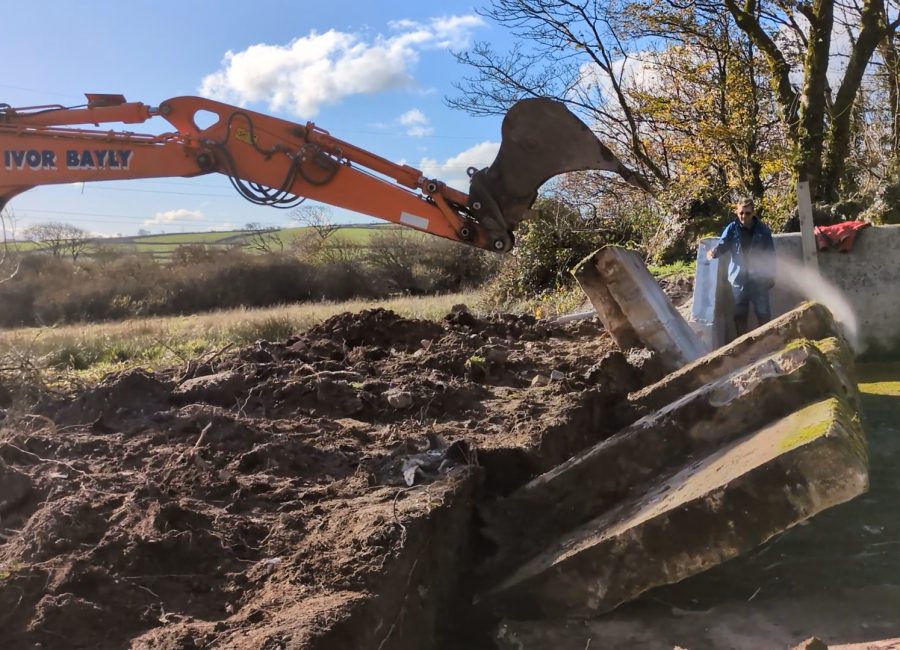Now a lot of guests ask us why we have alpacas
The mad truth is that we were lucky enough to travel around South America a few years back and well it’s the land of many wild and wonderful things but most notably llamas and alpacas especially in Bolivia and Peru!
We fell in love with these beautiful animals. I quote “one day we’re going to have some!” Here’s one of my favourite photos at the summit of Macchu Picchu with a wild llama as company! There they roam freely and are obviously very used to tourists up there.
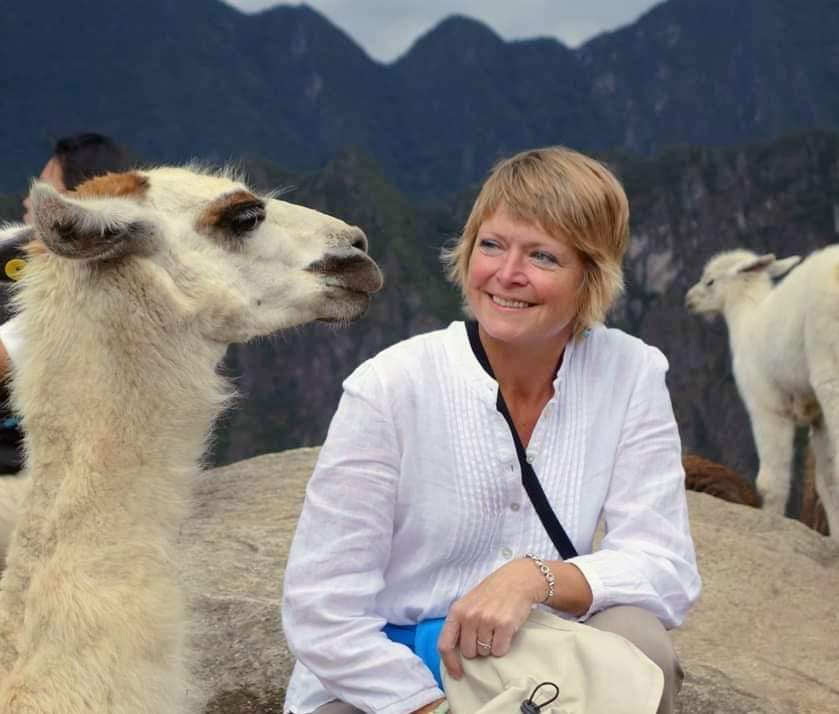
This is why our boys are named after Peruvian places – Macchu, Cusco and Lima!
Back in the spring of 2020 during Covid lockdown, we discovered an alpaca farm down in Saltash and telephoned the owners. Long story short, we took ownership of three male alpacas. At that time, these boys were aged 3 and 4.
Taking ownership of alpacas is not particularly straightforward however, as our grounds needed to be inspected to ensure that they would have enough pasture and it would be a safe and pleasant place for them to thrive. A bit like you and me scoping out places to visit and stay!
Thankfully the owners were delighted with the acreage and quality of pasture and advised us on building their shelter in the paddock. In addition, once the covid restrictions were lifted, we had to go on an alpaca husbandry course at their Saltash farm. There’s a lot to learn! We were trained on cutting their toe nails. Honestly this is a battle and they really don’t like it (nor do we).
We’ve designed and built what we call the ‘salon’. It’s basically a timber keep or crush that holds an alpaca in situ so that we can get to their feet (one at a time of course!)
Feeding is important and we learned about supporting their diet and administering vitamin D injections and worming treatment. Something that they need especially during the winter months.
What’s the difference between an alpaca and a llama?
They are cousins. Llamas are a wild animal whilst alpacas were bred for their quality meat and fleece. They are essentially a cross between a llama and a vicuna, and you won’t find them in the wild as they’re now a domesticated animal. Llamas are bigger (and uglier) than the alpacas and alpacas are great deal friendlier! They don’t spit very often – only usually at each other and then that’s arguing about food sharing.
Do you have to Shear the alpacas?
Alpacas have to be sheared every year. No we don’t do this job as it requires skilled and experienced shearers. Our regular shearing team come from Welshpool usually at the end of May. If you’re lucky enough to be a guest here at the end of May, then you’ll be able to witness the shearing. They travel all over the south west visiting countless farms to shear flocks of sheep and alpacas.
Shearing an alpaca takes just minutes and at the same time the shearers will give them a pedicure and check their teeth. Although to watch shearing you might think it a bit barbaric, but the process is painless and as soon as they’re released they literally zoom and leap around the paddock in joy!!
Alpacas must be sheared because they would literally overheat in the summer. Their beautiful thick fleeces keep them snug and dry all winter and it would be cruel not to relieve them of their winter coats in the warmer months. Given that their coats are so thick, it is very difficult for alpacas to make vitamin D from sunshine, and removal of the fleece allows this to happen!
A couple of years ago, after they were shorn, the weather took a turn for the worst. It was unfashionably cold and very wet that May and we took the decision to quarantine the boys in the barn for three days to protect them from the elements – these animals can easily die of exposure.
What do you call a herd of alpacas? A fluffle. Honestly!
What do you do with the Alpaca Fleece?
Well contrary to popular belief, there is no real market for selling fleece from three alpacas. There are specialist mills that spin the fibre and turn it into yarn, but it’s not worthwhile for us to send ours out for such a small quantity.
Instead, we use it to encourage birds to nest. Birds love it. Very often the fleece will have bits of hay in it too which makes for excellent nesting material. After all, alpaca fleece is super warm and water repellent. The RSPB recommend it as an excellent way to boost bird nesting.
We simply stuff fibre into bird feeders and hang them in various trees around the farm so that the birds can help themselves to this luxurious natural resource.
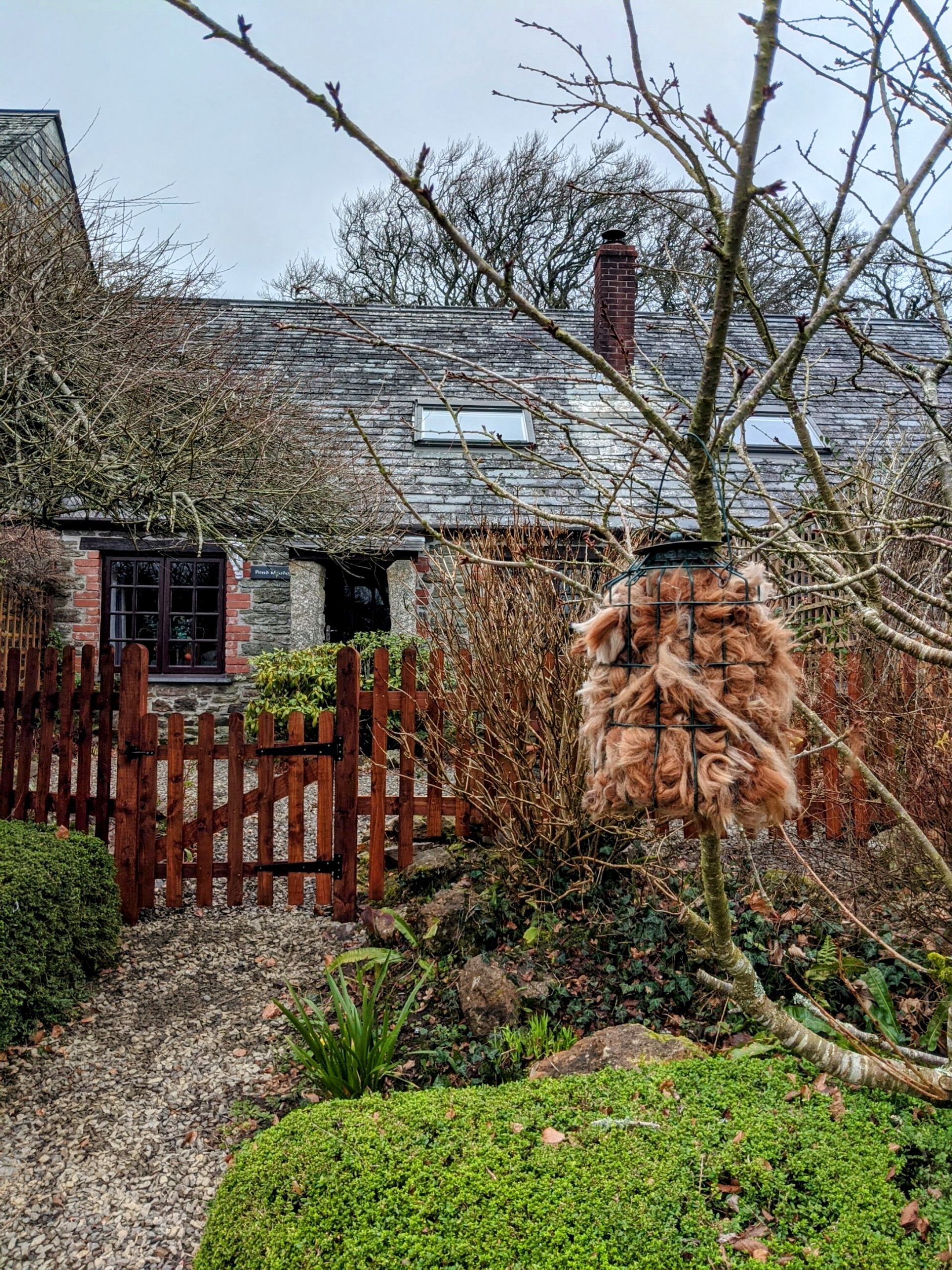
This is a nest made of alpaca wool that we found on the lawn in the BBQ area. We think it’s from a finch or a blue tit because there are so many of them here.
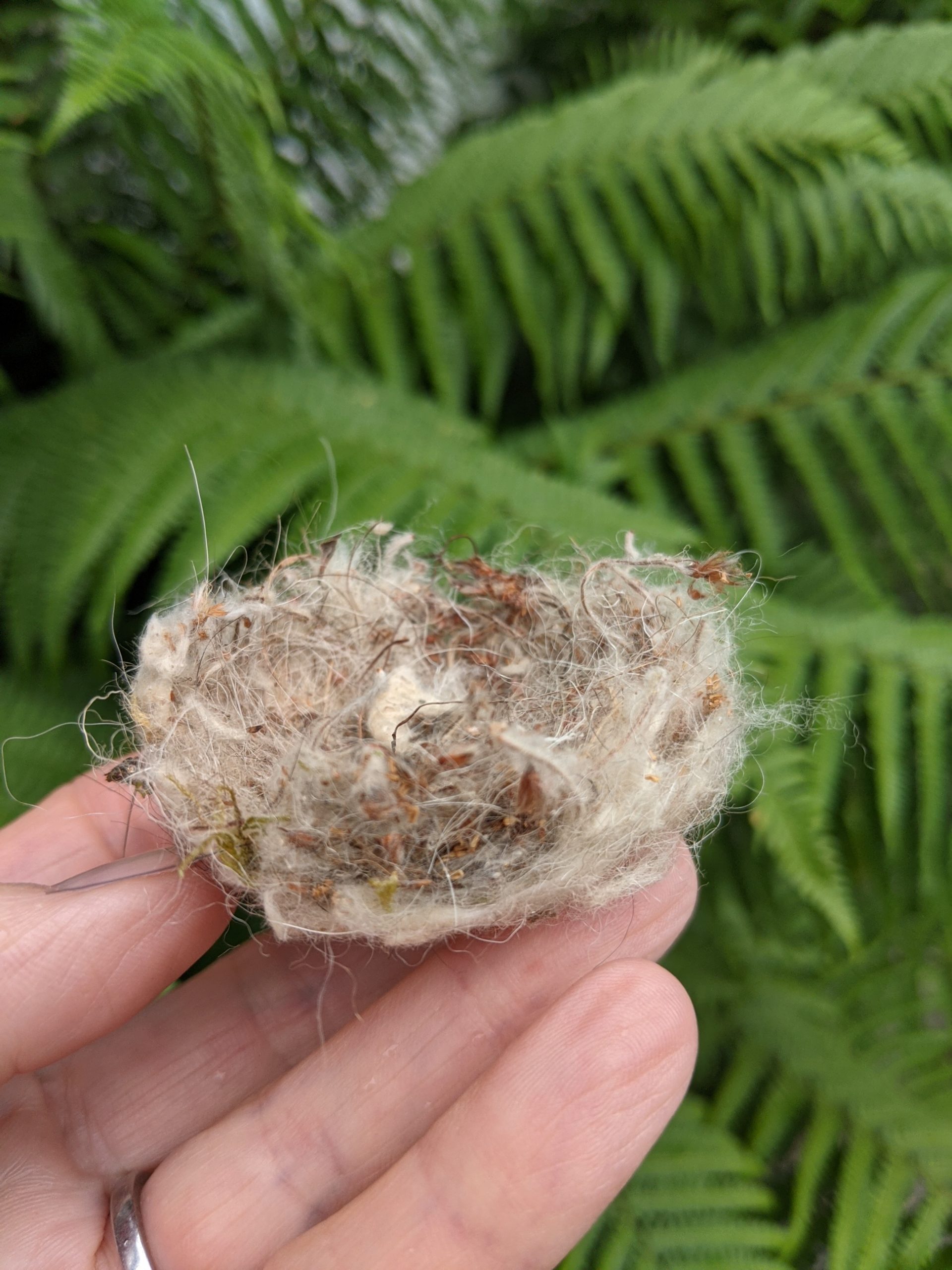
Alpaca fleece also makes for an excellent environmentally friendly slug repellent! We use it for protecting our vegetables that we grow in the greenhouse. It’s also recommended for laying around the base of fruit trees in the winter, but given that we’re so close to the coast, we rarely have snow and thick frost.
Thanks for reading!
Jules the mad alpaca woman

